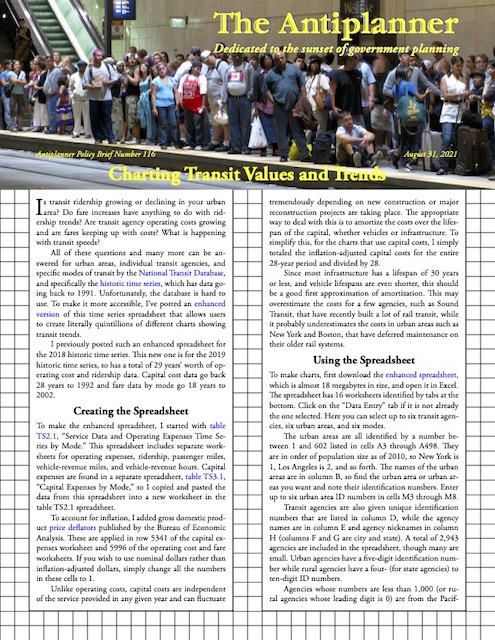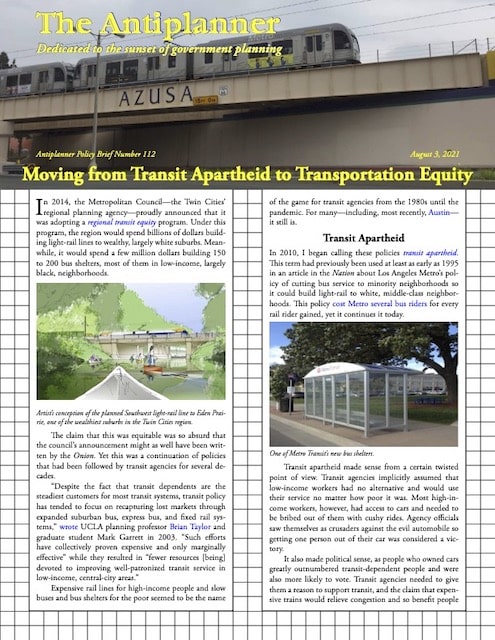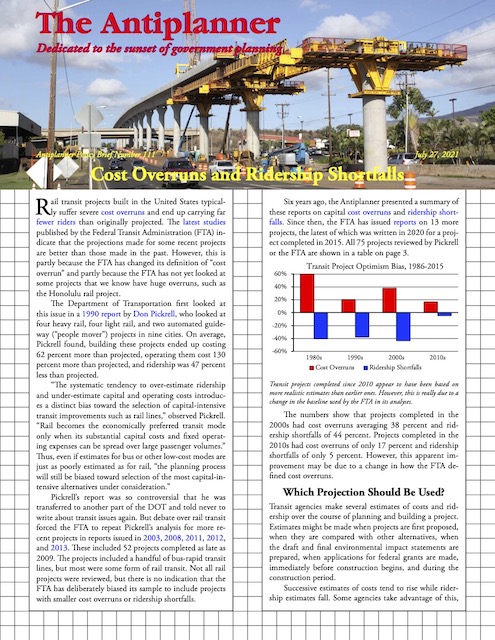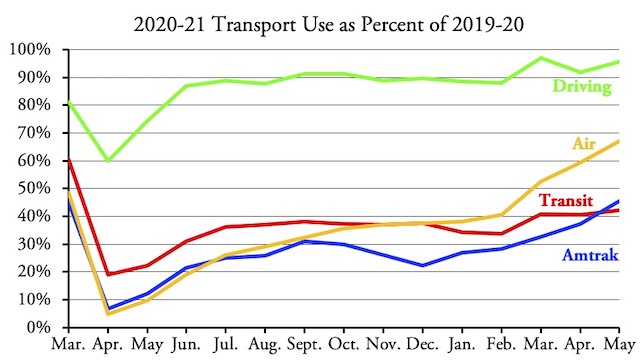From San Francisco to North Carolina, transit agencies have declared September to be “Transit Month.” “This month is all about celebrating the vital role of public transit for our communities,” says one transit agency, which means “getting elected leaders to make transit a priority issue.”
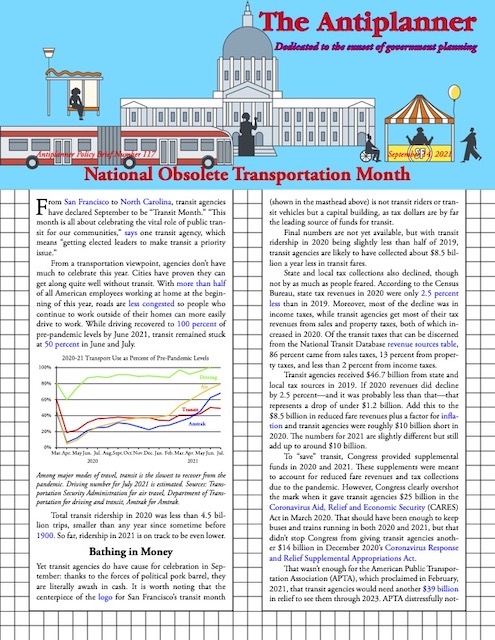 Click image to download a PDF of this four-page policy brief.
Click image to download a PDF of this four-page policy brief.
From a transportation viewpoint, agencies don’t have much to celebrate this year. Cities have proven they can get along quite well without transit. With more than half of all American employees working at home at the beginning of this year, roads are less congested so people who continue to work outside of their homes can more easily drive to work. While driving recovered to 100 percent of pre-pandemic levels by June 2021, transit remained stuck at 50 percent in June and July. Continue reading

